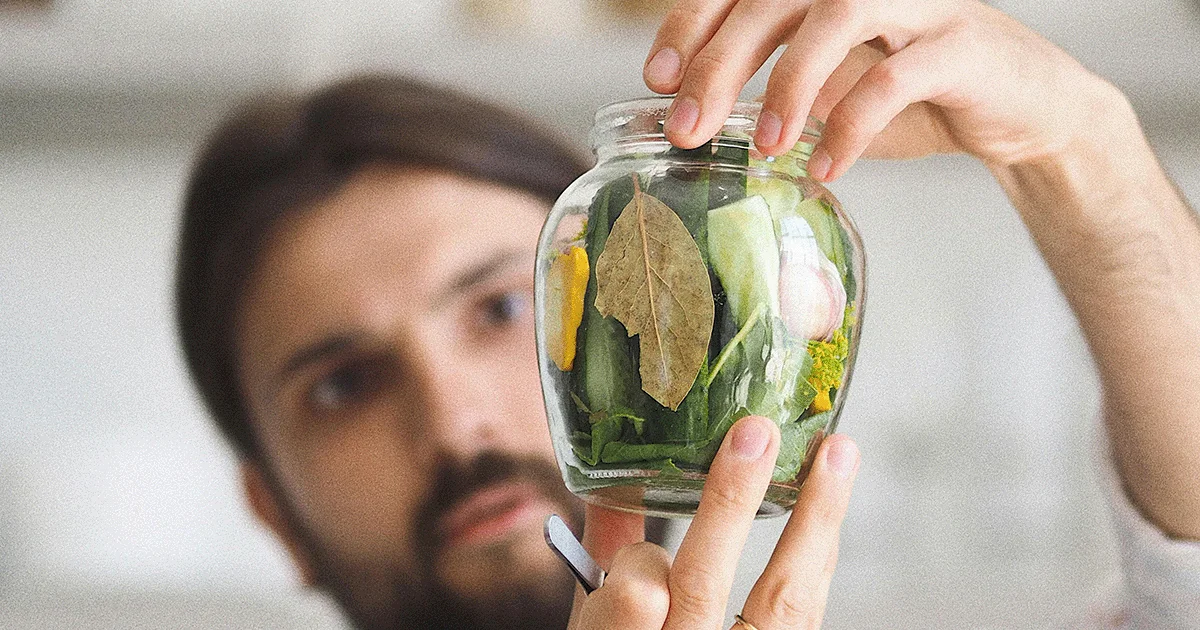Here's what we'll cover
Here's what we'll cover
It’s easy to fall down a rabbit hole of health information, especially when you realize there’s an entire alphabet of vitamins and minerals your body needs to function correctly.
Luckily, some of the essential nutrients you’re not so familiar with are similar to those that get more attention. Vitamin K, for example, is easy to understand once you have a handle on vitamin D. Like the Ds, vitamin K is actually a group of fat-soluble compounds that play a crucial role in blood clot formation and bone health.
Again, like the Ds, there are two forms of K that are especially important for humans: vitamin K1 (phylloquinone when made naturally, phytonadione when made synthetically) and vitamin K2 (menaquinone when made naturally, menadione when made synthetically).
But it gets a little more complicated from there. Vitamin K1 is called phytonadione when it’s synthetic. And K2 has many different forms, each named differently based on the length of a side chain on their chemical structure.
You may see menaquinone expressed as menaquinones‐7 (MK‐7), which is commonly found in fermented vegetable products, menaquinones-4 (MK-4), which is commonly found in animal products. These two are the most important forms, but there are other MKs, such as MK-5 and MK-6. Menaquinone also comes in a synthetic version that may be given to livestock called menadione.
Vitamin K and your body
K1 and K2 work on similar structures and processes in your body. Like D, vitamin K interacts closely with calcium in your body, in this case, helping to regulate the levels of this mineral in your blood.
It’s also vital for the creation of pro-blood clotting proteins known as factors II, VII, IX, and X, and anti-blood clotting proteins known as proteins C, S, and Z. Research suggests that vitamin K2 may help lower your risk of cardiovascular disease (Shea, 2017).
Some studies also show that the Ks might help prevent fractures in people with osteoporosis, but findings are mixed, and more work needs to be done to confirm these findings (Iwamoto, 2014).
There’s no known reason why you should worry about getting too much vitamin K, either. Since there are no studied or reported side effects of a high K intake, there’s no established upper tolerable limit (UL) for this vitamin. Certain people should watch their intake, though, and make sure to follow medical advice about their intake and consistency.
Since vitamin K plays a key role in blood clotting, people on blood thinners such as warfarin (brand name Coumadin) need to track their intake closely. Listen to your healthcare provider’s dietary advice if you’re on this type of medication.
Foods high in vitamin K
Though vitamin K mostly comes through food or dietary supplements, our bodies do produce a small amount of it. Bacteria in our colons, such as E. coli, can synthesize vitamin K2 but not K1.
Vitamin K deficiency is rare in the United States, mostly because the dietary sources of this fat-soluble vitamin are regular staples in most people’s diets. The amount that is assumed to ensure nutritional adequacy is 120 mcg (micrograms) a day for men over 18, and 90 mcg a day for women over 18.
Vitamin K1 foods
Vitamin K1, or phylloquinone, mostly comes from plants. And you don’t need to go out of your way to track down food sources to boost your dietary intake.
Although there’s nothing wrong with vitamin K supplements, you might not need them. You’re most likely already eating many of the foods rich in this vitamin if you generally try to eat a healthy diet low in processed foods.
You’ll notice that it’s a lot of green vegetables, but there are a couple of fruits that make the list below (USDA, 2019).
Leafy greens
The kale craze had at least one benefit: boosting the vitamin K1 intake of healthful individuals. This salad staple has 81.8 mcg per one-cup serving, according to the USDA. Chances are you’re downing more than that when you have a salad. But if you hate kale, all is not lost.
Choose one cup of other green leafy vegetables like collard greens for 157 mcg, swiss chard for 299 mcg, mustard greens for 144 mcg, spinach for 145 mcg, dandelion greens for 428 mcg, beet greens for 152 mcg, or turnip greens for 138 mcg.
Brussels sprouts
A taste for Brussels sprouts tends to come with age. But that seems fitting since the potential cognitive and bone health benefits of vitamin K are especially crucial for older adults. Dish up one cup of these cruciferous veggies for 156 mcg of the fat-soluble vitamin.
Broccoli
Broccoli is a nutritional powerhouse. Between the surprisingly high protein content, digestive-regulating fiber, and an array of vitamins and minerals, it’s easy for vitamin K to get lost. But whether you choose it for the K or not, one cup of this common veggie delivers 89.4 mcg of the vitamin.
Asparagus
The vitamin K content of asparagus is surprisingly high for food we associate with low-calorie diets. One cup of this fibrous vegetable boasts 55.7 mcg of K1.
Lettuce
We think of poor lettuce as a filler, not a nutritional knockout. But when it comes to boosting your intake of vitamin K, lettuce delivers. One cup of the leafy green might only deliver 8.44 mcg, but it’s one of the most accessible foods to work multiple servings of into your daily menu.
Work your way through a medium head of endive, and your reward is 821 mcg of K1. Choose romaine instead, and you’re looking at 791 mcg for the same amount.
Sauerkraut
You’ll boost not only your levels of vitamin K but also your gut health when you reach for sauerkraut. This fermented food boasts 18.5 mcg of vitamin K per cup for just 27 calories.
Soybeans
Edamame is perfect for rounding out stir-fries and salads or blunting hunger as a protein-rich, pre-dinner snack. It also happens to be a good food source of vitamin K, delivering 41.4 mcg in one cup of shelled beans.
Green beans
This dinnertime favorite is a keeper and an outstanding vitamin K food. One cup of green beans delivers 375 mcg of vitamin K. That’s well over the daily value needed for an adult.
Kiwi
Kiwi doesn’t get a lot of attention, but it’s packed with nutrients. It’s not only one of the top food sources of vitamin C, but its K content is noteworthy as well. One cup of the tropical fruit delivers 71.3 mcg of this fat-soluble vitamin.
Chives
Although you’re unlikely to sit down to a bowl of chives, adding them to the top of your meal is like sprinkling on vitamin K. Just one tablespoon packs 6.38 mcg of the crucial vitamin.
Prunes
Prunes don’t have a reputation for being tasty, but they’re an easy way to boost your vitamin K intake. You’ll get 104 mcg from one cup of pitted prunes. But when it comes to this fruit, it’s best to go with whole over juice. One cup of prune juice has just 8.4 mcg of the vitamin.
Pickles
Although you’ll get different amounts of vitamin K depending on which vegetable you buy picked, one cup of chopped cucumber pickles delivers 75.4 mcg.
Pumpkin
Pumpkin makes getting enough vitamin K-rich foods simple. You’ll not only get 39.2 mcg in one cup of canned pumpkin, but you’ll also be able to use it in a wide variety of sweet and savory dishes.
Pine nuts
Consider this your excuse to make pesto. Pine nuts carry an impressive 72.8 mcg of vitamin K in one cup, almost your daily value.
Blueberries
Berries are all-around healthy foods, and generally, it doesn’t matter which one you prefer. But in the case of vitamin K you’ll want to opt for blueberries, which pack 28.6 mcg in one cup, or blackberries, which boast 28.5 mcg per cup. Raspberries have a lot going for them but fall short in the K department with just 9.59 mcg per cup.
Avocado
Have an avocado habit? Don’t worry; it’s healthy—at least for your vitamin K consumption. One cup of the sliced berry (yes, it’s a berry) delivers 30.7 mcg of the crucial vitamin.
Cashews
You probably don’t want to knock back an entire cup of cashews. But snack on one ounce of these delicious seeds for 9.67 mcg toward your daily needs.
Vitamin K2 foods
The other half of the vitamin K equation is K2. This group of compounds, also called menaquinones, can be produced in the colon by certain strains of bacteria, but most of it comes from your diet.
Meat and dairy are the primary sources of vitamin K2 intake, which is why it’s probably no surprise that Americans aren’t falling behind on this vitamin. Still, it doesn’t hurt to become familiar with the best food sources of vitamin K and make sure they’re seeing regular rotation through your weekly menu.
In general, foods known for their K2 content have less of this variation than K1 foods have of the other. That means you may need to eat more K2 foods than K1 foods to maintain healthy levels. Natto is the one exception, packing an impressive amount of K2 into each serving.
Talk to a health professional to figure out how much is right for you, and work these foods into your weekly meal lineup:
Natto
Egg
Liver (beef, chicken, and goose)
Turkey sausage
Chicken
Cured meats (salami and pepperoni)
Cheese
Full-fat milk
DISCLAIMER
If you have any medical questions or concerns, please talk to your healthcare provider. The articles on Health Guide are underpinned by peer-reviewed research and information drawn from medical societies and governmental agencies. However, they are not a substitute for professional medical advice, diagnosis, or treatment.
Iwamoto, J. (2014). Vitamin K2 Therapy for Postmenopausal Osteoporosis. Nutrients, 6(5), 1971–1980. doi: 10.3390/nu6051971, https://www.ncbi.nlm.nih.gov/pubmed/24841104
National Academies Press (US). (2001). Vitamin K. In Dietary Reference Intakes for Vitamin A, Vitamin K, Arsenic, Boron, Chromium, Copper, Iodine, Iron, Manganese, Molybdenum, Nickel, Silicon, Vanadium, and Zinc. Washington (DC). Retrieved from https://www.ncbi.nlm.nih.gov/books/NBK222299/
Shea, M. K., Booth, S. L., Weiner, D. E., Brinkley, T. E., Kanaya, A. M., Murphy, R. A., … Kritchevsky, S. B. (2017). Circulating Vitamin K Is Inversely Associated with Incident Cardiovascular Disease Risk among Those Treated for Hypertension in the Health, Aging, and Body Composition Study (Health ABC). The Journal of Nutrition, 147(5), 888–895. doi: 10.3945/jn.117.249375, https://www.ncbi.nlm.nih.gov/pubmed/28356433
U. S. Department of Agriculture (USDA). FoodData Central. (n.d.). Retrieved December 2, 2019 from https://fdc.nal.usda.gov/index.html










